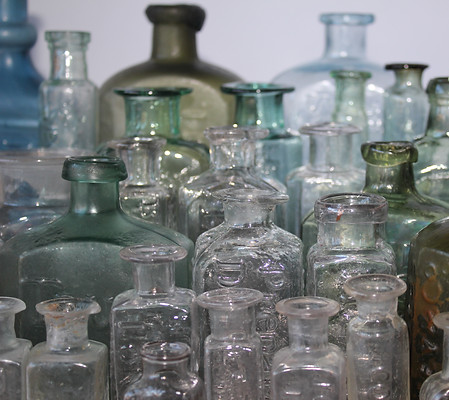Patent medicine bottles, 1700-1914
My own interest in 18th and 19th century British patent medicines and quackery started with the bottles.
I've collected antique bottles for over 40 years. Retrieved from river beds, Victorian rubbish dumps, junk shops, antique fairs, and anywhere else I find them, the handmade glass and stoneware bottles and jars of yesteryear have been one of my main interests since childhood.
Just over 20 years ago I came across my first really early medicine bottle: a beautiful flint glass square dating to the beginning of the 19th century that once contained "Cordial Balm of Gilead, Prepar'd by Dr Solomon": my imagination was immediately captured. My old collection is no more, sacrificed on the altar of The Early Medicines Collection, and I now focus almost solely on pre-1860s patent medicine bottles and related items: pamphlets, handbills, books, trade cards.
But to understand the characters, the quackery, the pseudo-science and more, when starting from the position of holding an old bottle in one's hand, it's necessary to understand the bottle and what it can tell us.
How old is it? Who made it and who filled it? Why is it that particular shape, colour, and size? Why does it bear that particular writing? Who was Dr Solomon? Who was Daffy? Did William Radam's Microbe Killer really cure all diseases, as claimed on the bottle?
All of these questions and more have answers, even if I / we don't yet know what they are. The answers, when (if) found, will often tell us something about the lives and times of the people, ordinary or extraordinary, who made, filled, emptied and threw away that bottle.
This section, which will probably grow to be the largest on this blog, is dedicated to the bottles, both individually and collectively.











